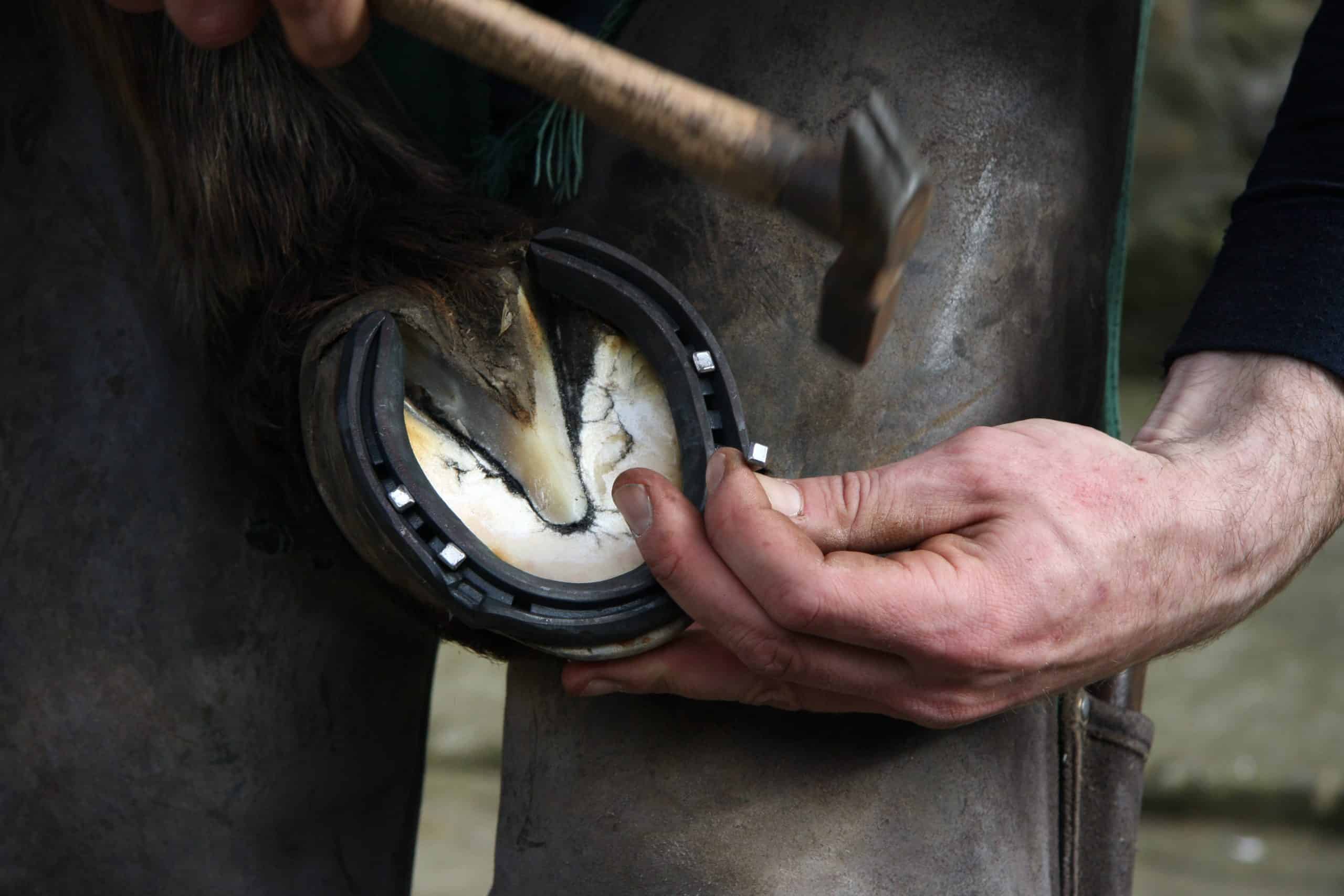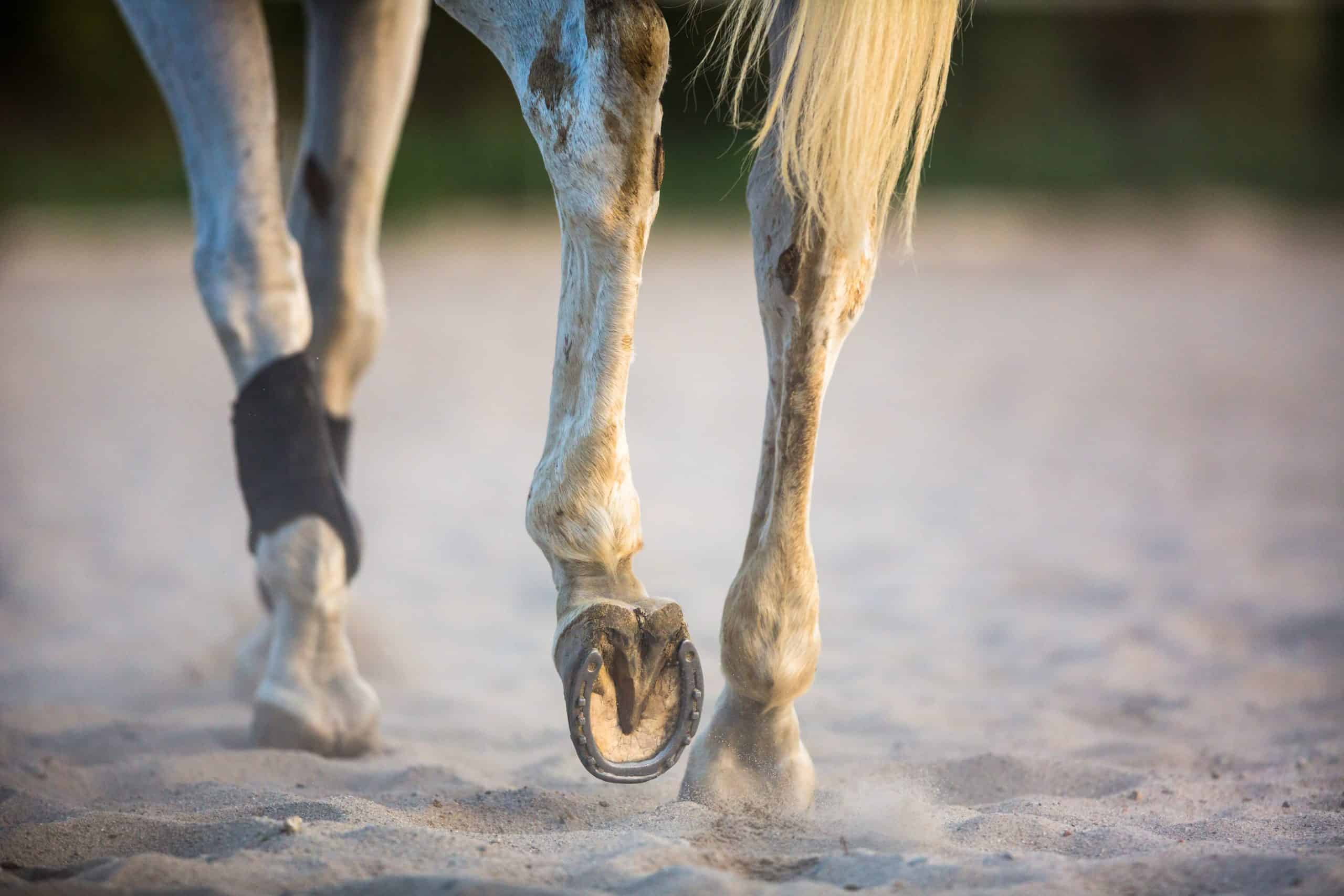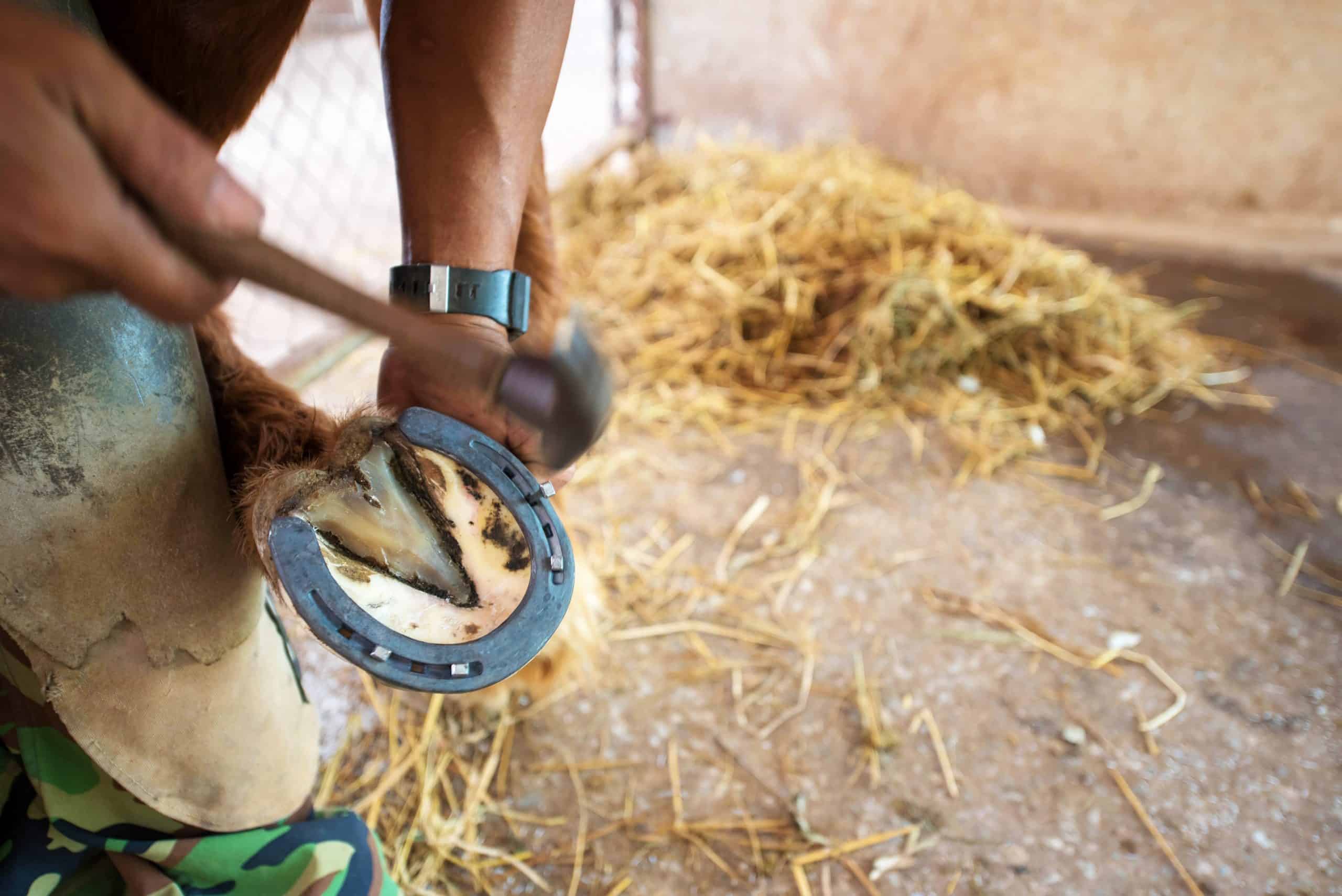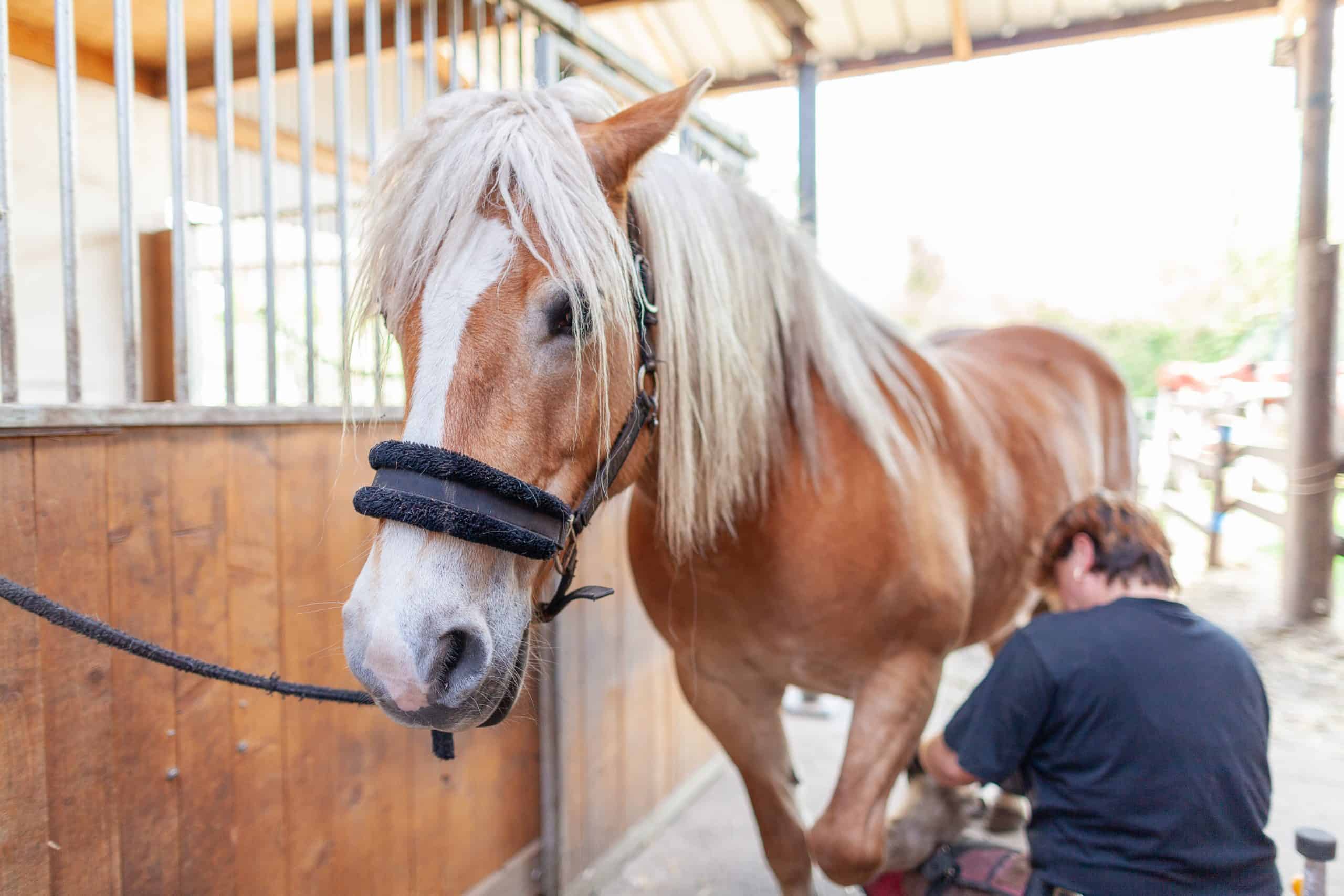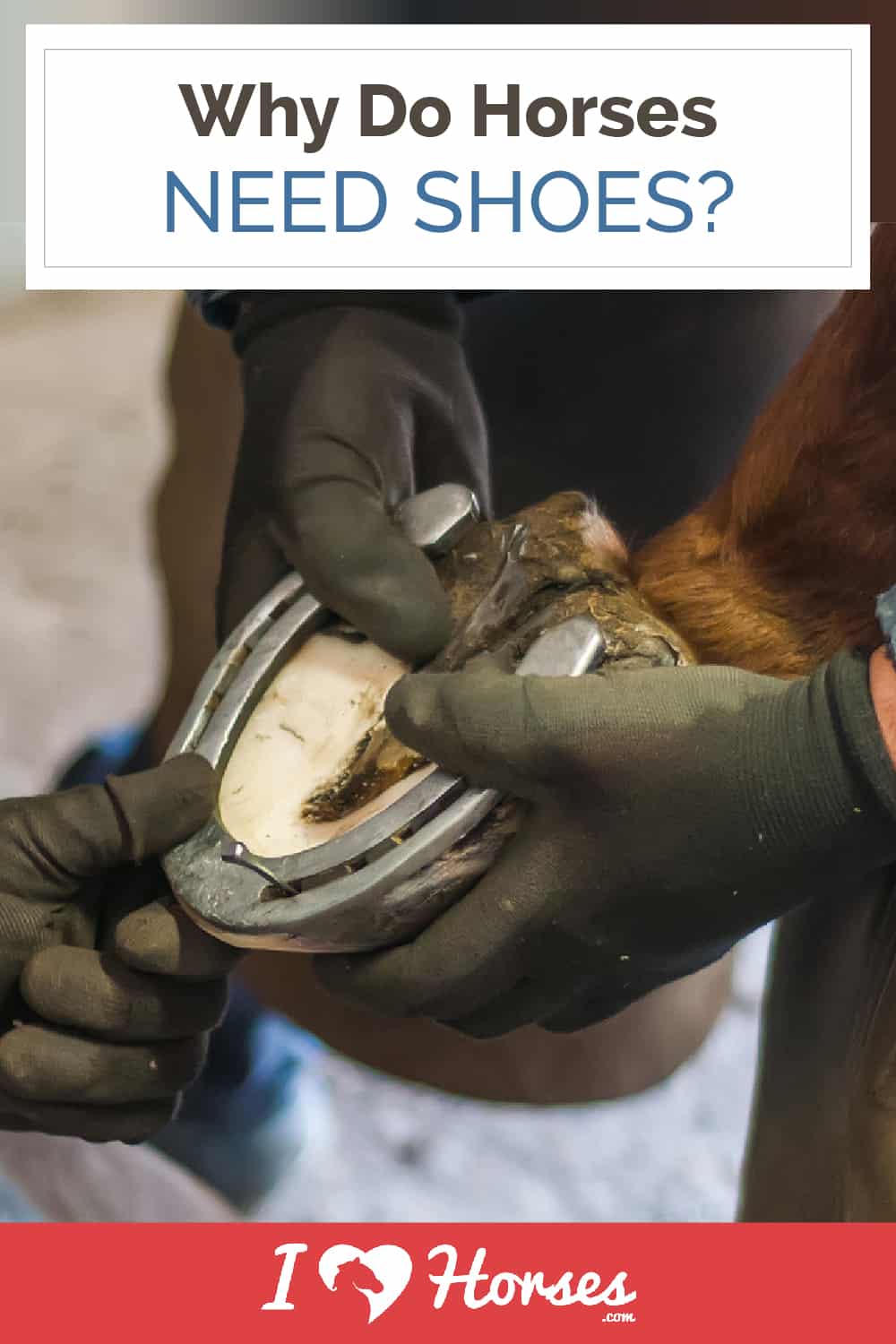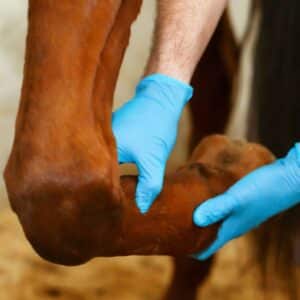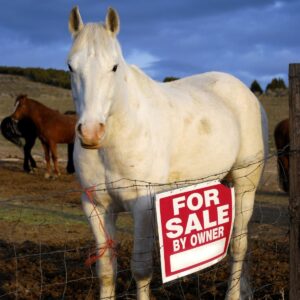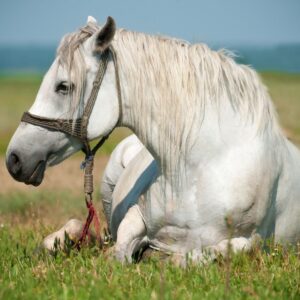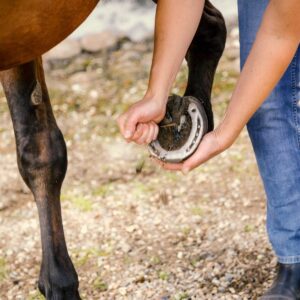The clip-clop of footsteps through a barn aisle is a familiar sound to many equestrians. The metal shoes responsible for this melody have been fitted to hooves for centuries, but what purpose do they serve? Continue reading to find out why horses need shoes.
Horse hoof history
Before the domestication of the species, wild horses thrived barefoot for thousands of years. Just like our fingernails, the horse’s hoof grows continuously. Wild horses typically lived in arid climates where they wandered over vast grasslands, naturally wearing down their hooves on varied terrain. The dry environment and reproductive success of horses with strong feet promoted the innate good condition of wild horses’ hooves in the absence of human intervention.
 The emergence of the horseshoe
The emergence of the horseshoe
When man domesticated the horse, he eliminated the natural factors that contributed to healthy hooves. He also subjected them to the stress of carrying a rider at accelerated speeds or pulling heavy loads.
The emergence of metal shoes coincided with the advent of housing farm horses in stalls. These horses lived far differently from their ancestors, spending most of their time confined and standing on wet footing. Constant moisture and limited circulation compromised the integrity of their porous hooves, but hoof health remained vital to the soundness and utility of the working horse.
When the outer layer of the hoof degrades, the sensitive inner structures of the equine foot are exposed. This situation results in lameness. Shoes served as a man-made solution to a man-made problem, a metal rim that was nailed to the insensitive hoof wall to protect the foot. As domestic horses transitioned from beasts of burden to recreational animals, shoes evolved as well.
Horseshoes today
Most domestic horses still live in stalls on soft ground with consistent exposure to dirty bedding and muddy pastures, resulting in brittle hoof walls. Modern shoes remain necessary to support and maintain good hoof condition.
While lack of mobility in stalled horses further reduces the quality of hoof growth due to decreased circulation, domestic horses are also asked to regularly perform strenuous physical activities and travel on hard surfaces that expose their frail feet to excessive erosion. Shoes protect the horse’s feet from this wear and tear of domestic use. They also safeguard the critical internal structures of the equine hoof.
Modern advances in the practice of shoeing horses have allowed shoes to surpass their original purposes of protection by providing a tool for skilled farriers to correct conformational issues in horses and even improve their performance. Farriers can accomplish this by trimming the hoof to achieve a specific balance or alignment. They can also do this through the use of specially shaped shoes made of different materials. Various types of pads also exist that can be added to the shoe to further cushion or angle the hoof.
Not all horses need shoes
While shoes may improve soundness or performance, they are not necessary for all horses. Some horses may have naturally strong hooves that don't require additional support as a result of good nutrition, genetics, or their environment. Others may not participate in activities that place excessive wear on their feet. However, all domesticated horses require regular trimming to maintain proper hoof shape and length. An experienced farrier can help horse owners determine if their individual horse needs shoes, but excellent hoof care is critical to preserving the welfare of every equine.
Does your horse wear shoes? Let us know in the comments below!
Horse Courses by Elaine Heney
- Listening to the Horse - The Documentary by Elaine Heney & Grey Pony Films
- Shoulder In & Out Training for better balance, bend & topline development with your horse
- Over 110+ Polework Exercises & Challenges to Download
- Dancing at Liberty & Creating Connection with Your Horse (11 lessons) - Grey Pony Films
About the Author
Caroline Cochran is a writer and avid equestrian who is passionate about sharing information with fellow horse-lovers. She has worked professionally with horses in top dressage barns and veterinary clinics for almost a decade.

